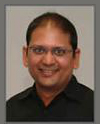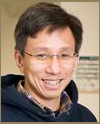Dispatchable Distributed Energy Resources for Seamless Integration into the Smart Grid
By Michael I. Emmanuel, Ramesh K. Rayudu and Winston Khoon Guan Seah
The benefits of large scale distributed energy resources (DERs) deployment in the evolving distribution network are quite obvious to all related stakeholders. However, utilities and authorities having jurisdiction (AHJ) over the grid could impede its step-wise realization due to possible potential impacts on the grid. In this article, we present the merits of deploying dispatchable DERs with monitoring, information exchange and control (MIC) functions as a possible means of mitigating some of the impacts of DER units on the grid.
Distributed energy resources (DERs) represent a group of energy resources which provide a myriad of possibilities such as electric energy generation, conversion, storage and interconnection to the area electric power system (EPS). They include photovoltaic arrays, microturbines, wind turbines, fuel cells, traditional diesel and natural gas reciprocating engines, and energy storage (such as batteries) technologies.
The 21st Century power system grid (smart grid) is envisaged to be “plug-and-play” connections of decentralized microgrids and DERs providing a two-way flow of electric power and information. The conventional passive distribution network is gradually evolving into an active network with the proliferation of these units. Moreover, there is increasing pressure and demand on the utilities to accommodate renewable energy resources into the area EPS from all stakeholders. For instance, the recently launched sustainable development goals (SDGs) by the United Nations emphasized increase of renewable energy in the global energy mix, efficiency and upgrade of technology for sustainable energy services. Also, according to reports from SDGs, about 2.8 billion people do not have access to modern energy services and with more than 1.1 billion without electricity. There are other motivations for this evolution such as the deregulation of the power delivery market globally, reliability, low cost, clean energy demand, climate issues, increased prices of non-renewable sources, etc.
However, the traditional and centralized electric grid was not designed originally for distributed power generation at the end-use points. This constraint coupled with the fact that monitoring and control of network elements (assets) were limited to the transmission and (medium voltage) segments of the grid, further adds to complexity with the proliferation of DERs in the last-mile distribution network of the area EPS. Also, the ability of the grid to cope with the intermittent nature of these deployments and maintain the voltage profile within the range specified by ANSI standard C84.1 (+/- 5% voltage bandwidth) throughout the distribution network is a non-trivial issue.
Additionally, the general requirements specified by IEEE P1547 for DERs seamless integration such as Volt/VAR Optimization, synchronization, integrity of interconnection, etc., makes DERs control and monitoring a critical issue. Also, considering the fact that most DER units are geographically dispersed, building a business case for their communication system presents yet another vital economic factor. Proximity to the existing communication infrastructure would provide an economical link.
Furthermore, DERs deployments have the capacity to inject DC current, producing harmonics and flickers that can hamper the power quality of the entire grid. Safety is another critical factor for deploying dispatchable DERs. The network protectors (NPs) in the conventional EPS were designed to trip at very high speed of 50ms (according to IEEE Std 1547.6). The integration of DERs has a high tendency to cause emergent behaviors and introduce momentary short delay in opening for faults on the feeders which exposes the utility workforce to danger and increases the risk of damage to assets, causing a blackout. Consequently, in order to harness the benefits of these emerging technologies, large scale deployments of DERs with minimal impact on the grid requires dispatchable and controllable DERs with generic communication interface.
More specifically, for a reliable active distribution network, the benefits (specified by IEEE Std 1547.3-2007) of deploying such units with these capabilities include:
- Remote scheduling, monitoring and control of the geographically dispersed DER units;
- Active and reactive power management to ensure power quality. For instance, DER unit might be requested to absorb or supply reactive power to maintain network equilibrium;
- Voltage regulation to maintain synchronism with the area EPS; and
- Provision of other ancillary services such as spinning and non-spinning reserve, reduction of energy losses, load regulation, etc.
However, the emergence of intelligent electronic devices (IEDs) proffers a possible solution for monitoring and controlling of DER units. These devices have both wireless and wireline capabilities to enable remote communication with the attached units. Alternatively, the deployment of smart meters with energy services interface (ESI) provide support for operations such as islanding, diagnosing, protecting, starting and stopping the DER units.
With the recent declaration by the Swedish government to be one of the first fossil fuel-free welfare states globally, generating an estimate of two-thirds of its electric power via renewable sources and Denmark producing 140 percent by wind power on a very windy day, support of DER units and transactions among stakeholders is necessary.
Contributors

Michael I. Emmanuel, an IEEE Student Member, has a B.S. in electrical/electronic engineering from the University of Ibadan, Nigeria and an M.E. in electronics and telecommunications engineering from Jadavpur University, India. He is currently a Ph.D. student at Victoria University of Wellington, New Zealand, with research interests in DERs integration and smart grid communication networks.

Ramesh K. Rayudu,an IEEE Senior Member, holds a B.E. (First Class–Distinction) from Osmania University, India, an M.E. from the University of Canterbury, New Zealand, and a Ph.D. in AI and power systems engineering from Lincoln University, New Zealand. He is currently a senior lecturer at Victoria University of Wellington, New Zealand.

Winston Khoon Guan Seah, an IEEE Senior Member, is currently a professor of network engineering in the School of Engineering and Computer Science, Victoria University of Wellington, New Zealand. He received B.S. and M.E. degrees from the National University of Singapore in 1987 and 1993, respectively, and a Ph.D. in applied systems science from Kyoto University, Kyoto, Japan, in 1997.
To have the Bulletin delivered monthly to your inbox, join the IEEE Smart Grid Community.
Past Issues
To view archived articles, and issues, which deliver rich insight into the forces shaping the future of the smart grid. Older Bulletins (formerly eNewsletter) can be found here. To download full issues, visit the publications section of the IEEE Smart Grid Resource Center.




